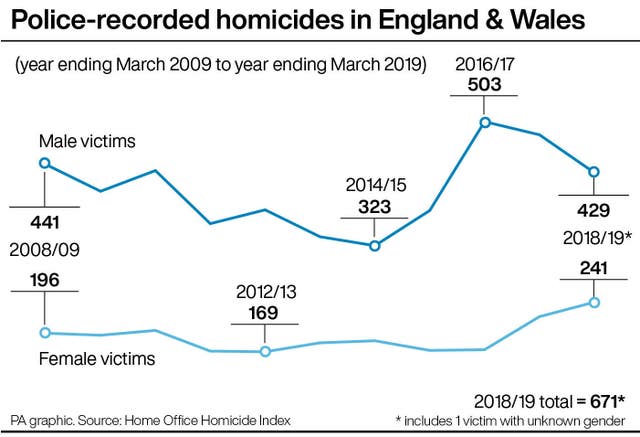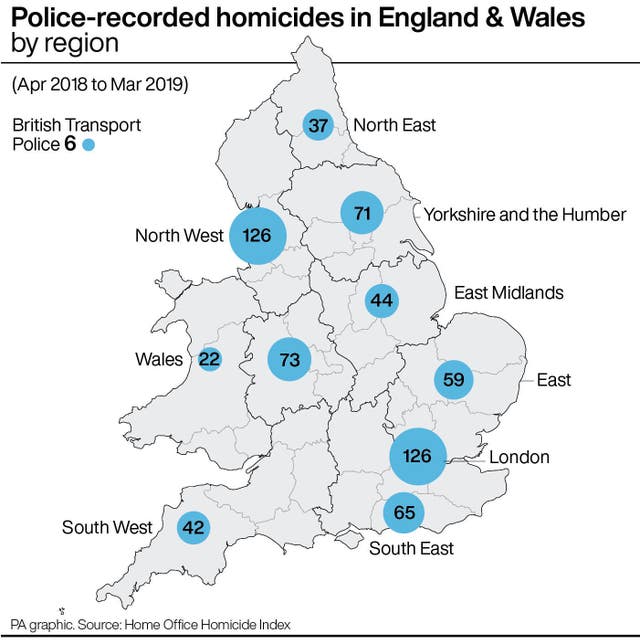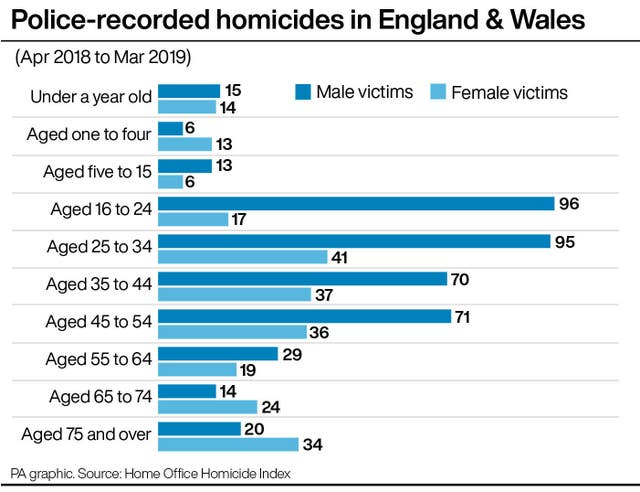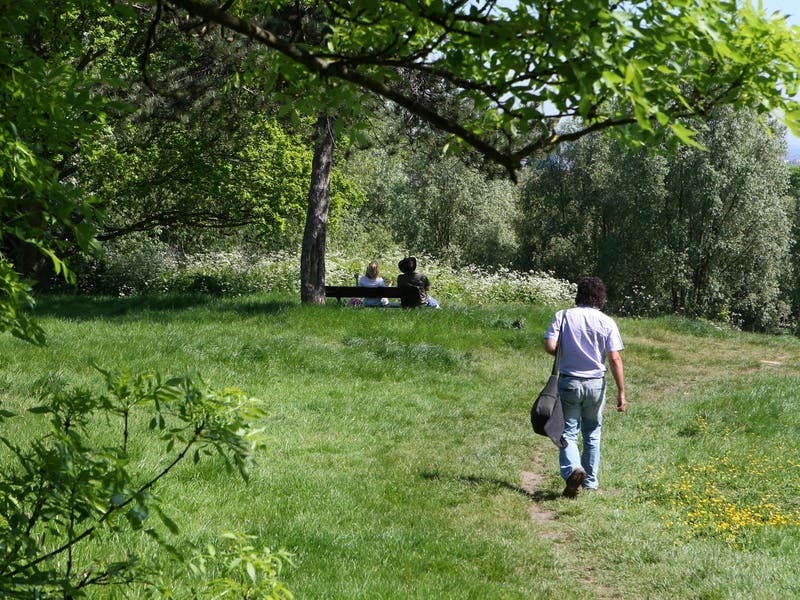The number of women and girls killed in homicides in England and Wales soared by nearly 10% in a year to the highest in more than a decade, official figures show.
Some 241 females were victims of murder, manslaughter or infanticide in the 12 months to March 2019, according to the Office for National Statistics (ONS).
The rise from 220 the previous year is the second annual increase and the highest number since the year ending March 2006, when there were also 241.
Almost half (48%) of the adult women were killed in a domestic homicide – an increase of 12 to 99 (14%) from the year to March 2018.

She told the PA news agency: “In a week where the Government has shown it can quickly act to change legislation where the risk of homicide is prevalent, I have no idea why the same level of urgency is never given for murders of women and girls.
“When you degrade the escape routes, when you make women poorer, when you cut the council budgets for vulnerable children, when you reduce the police and increase the number of perpetrators released under investigation, you endanger women and children.”
The ONS report said female victims were most likely to be killed in or around a home, accounting for 71% (170) of offences.
And the suspect was a partner or ex-partner in nearly four in 10 (38%, or 80) killings of adult women, up 17 from 63 the previous year, but similar to the average of 82 a year over the last decade.
One of those victims was Kay Richardson, 49, who was beaten and strangled to death by her estranged husband Alan Martin, 53, in September 2018, just days after he had been arrested for allegedly raping her.

“We need an urgent, detailed examination of every case and what failings they have in common.”
Alex Mayes, external affairs manager at charity Victim Support, said: “It is deeply disturbing to see that more women are being killed, in part due to a rise in homicides as a result of domestic abuse.
“Working with the families bereaved by murder and manslaughter, we know that the impact of these crimes is devastating to both families and communities.
“These statistics highlight the fatal impact of domestic abuse, and show how much more needs to be done to tackle abuse and keep victims safe.”

Hannah Gousy, head of policy and external affairs at Crisis, said: “These figures are a devastating reminder of why it’s so important for women experiencing domestic violence to have somewhere safe to escape to, and how our continued failure to act is having fatal consequences.
“We know that leaving an abuser can be one of the most dangerous times, but currently we’re leaving women with no option but to return to the very place and person they were trying to flee from, because they have nowhere else to go.
“This is truly shameful, we can and must do better than this.”
The number of baby girls and toddlers killed in the period also reached a decade high, with homicide victims including 14 females under the age of one and 13 toddlers aged between one and four.
These are the highest numbers since the earliest available figures, when six female babies and eight children aged between one and four were killed in the year to March 2009.

Overall, there were 671 victims of homicide, 33 or 5% fewer than the previous year – the first fall since 2015.
However, this was partly due to those killed in the London and Manchester terror attacks and the Shoreham air crash being included in the 2018 figures.
The ONS said the drop in offences recorded in the 12-month period was driven by a fall in male victims, which dropped 11%, from 484 to 429.
But the majority of victims, just under two thirds (64%), were male and just over a third (36%) were female.
The most common method of killing continued to be stabbing, with 259 homicides committed with a sharp instrument, down 8%, with a fall of 23 offences, on the previous year.






